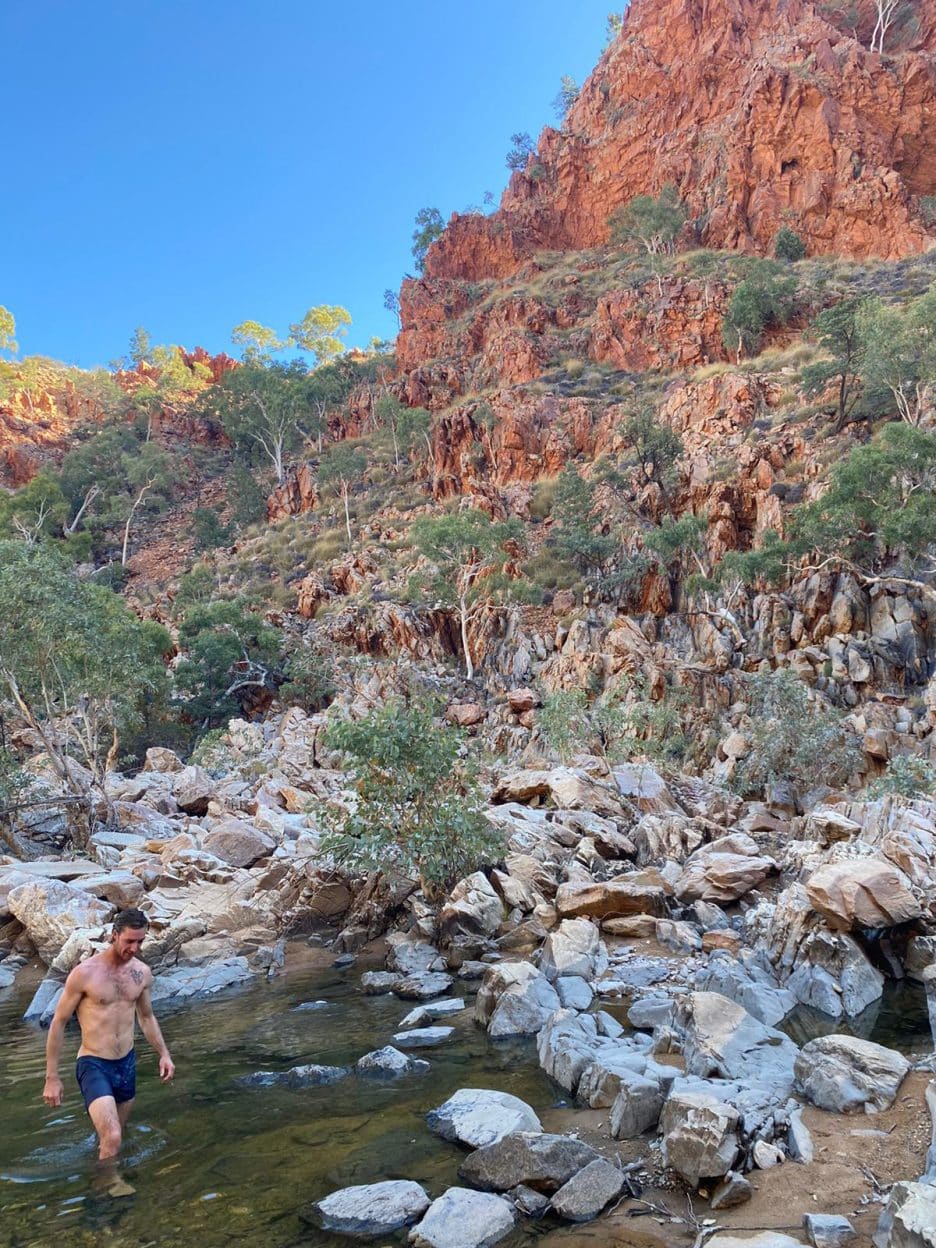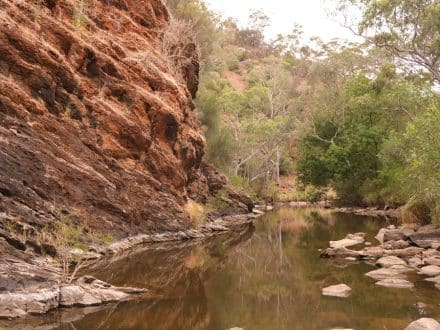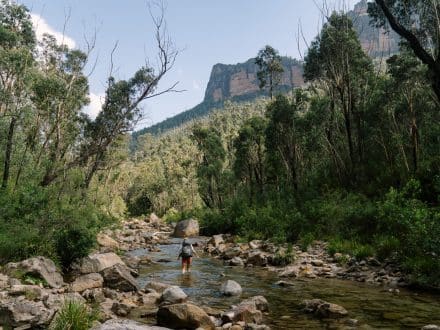To spend a day elevated in the central desert is to connect with a profound touchstone of Australian-ness. Doubly so if coming via Berlin.

It was late autumn when Holden and I set off on a road trip from Melbourne to Darwin. It’d been nine months since we’d seen each other. He’d spent those months in a Berlin winter, seeking a change of scene and chasing love. So a road trip in the Hilux for my best pal and I became the plan. The road and time would give us opportunity to catch up though, as nature enthusiasts, the bush, its flora and fauna, would dominate our attention and conversation.

An irresistible, post-hike dip at Redbank Gorge.

A hooded robin perches in the gorge in the late afternoon glow.
By late May, and at around the halfway mark of our journey, we found ourselves perched in the Tjoritja (West MacDonnell Ranges) National Park, 156 kilometres west of Alice Springs. We had a mission – and a firm date – to be in Litchfield National Park by the first week of June, but we baulked at the idea of doing a multi-day effort on the renowned Larapinta Trail. Instead we found ourselves in Redbank Gorge, summoned by the allure of deep cool pools and impressive vistas, a different kind of beauty to the gibber plains and arid shrublands we had been acquainted with further south. This particular gorge connects to Rutjupma (Mount Sonder), where a 15-kilometre return day walk along the ridgeline and to one of the highest peaks in the Tjoritja begins. Anyone visiting these ranges will be confronted by the obvious antiquity of this landscape. The colours hint at the age, with red ochre tones the result of millions of years of erosion. Eye-catching are the dramatic folds and layers of rock which run through the landscape, the lasting mark of a geological event around 300 million years ago that morphed 850-million-year-old quartzite. These ranges once rose to heights similar to the Himalayas (about 10 000 metres) but after all these years of weathering they now reach about 1500 meters. This provides context for those with an imagination for the past and an appreciation for the present.


Crossing the ephemeral Redbank Creek, lined with magnificent river red gums, we began the track up to the saddle. The ascent begins almost instantly and with it the vantage point provides an early vista. However the pace to start was slow; twitching, all while keeping an eye on the ground for reptiles and wildflowers, took away our sense of time.
Before climbing even 100 meters we passed a group of ten hikers on their way down. They’d tackled the walk from early morning, leaving in the dark to experience what we soon found out was a popular ambition, the Sunrise on Sonder.
As we reach the saddle, views to the north and south across the Tjoritja Ranges open up. An ever-elusive peregrine falcon, so obviously built for speed, drifted from its perch in the rock face across the fanning flats of the arid centre. In a hazy state, slightly delirious from a constant intent to pay attention to the detail during our biodiversity-blitzed drive, the landscape beheld unfathomable beauty. “Sensory overload” was a frequent phrase. The sun reached overhead, our pace became more consistent as the birds and our twitching capabilities began to thin out. The chatter slowed and our minds dreamt as we followed the saddle toward the Mount Sonder peak. The view from Rutjupma peak widens your eyes as you attempt to take it all in. This ancient landscape is ever romantic and contains an extremely rich history among First Nations people. The descent down the saddle casts the expanse of the Tjoritja in full view. A sense of contentment

was felt as we mosey back along the same track, admiring the remarkable landscape and the pleasure it is to be in it. Once you reach the gorge you can take the sandy corridor approximately 1.5 kilometres toward a waterhole to cool off. The water is so cold that reptiles, being ectothermic, can sometimes meet an untimely death when chasing prey into the water only to become trapped themselves. The excitement of seeing a large python or the like in the water encouraged our every step to make this final effort, although it must be said, our feet were wearing. Though no frozen specimens would eventuate, the bird life was more alive under the canopy of the large river red gums and the exciting sighting of a black-footed rock wallaby once again engaged our inner-child. With such beauty and grace does this macropod leap among the cliff flanks. After inspecting our photos, we later established that, of course, the individual had eyes on us well before we spotted it.


With the ‘never regret a swim’ mantra in our heads, we submerge ourselves in the icy water. What an incredible walk, what an incredible landscape.


